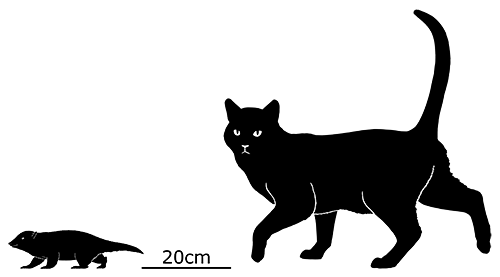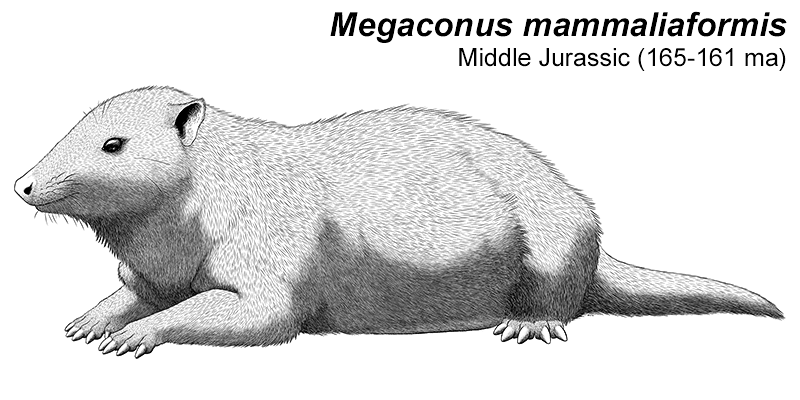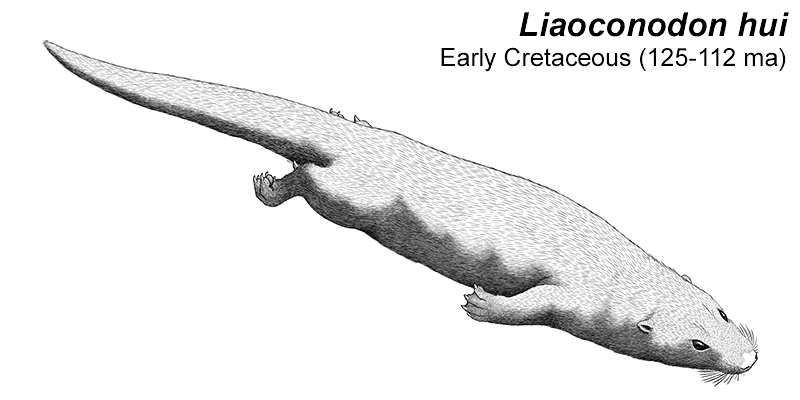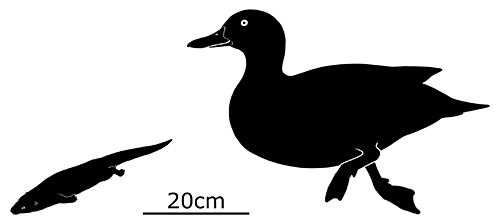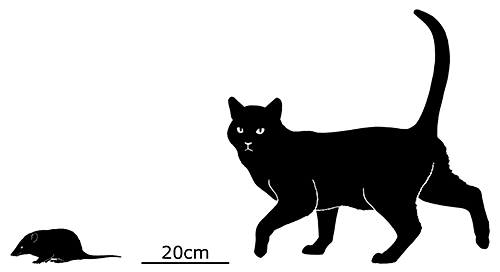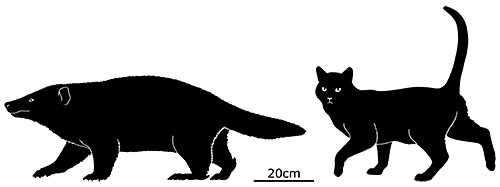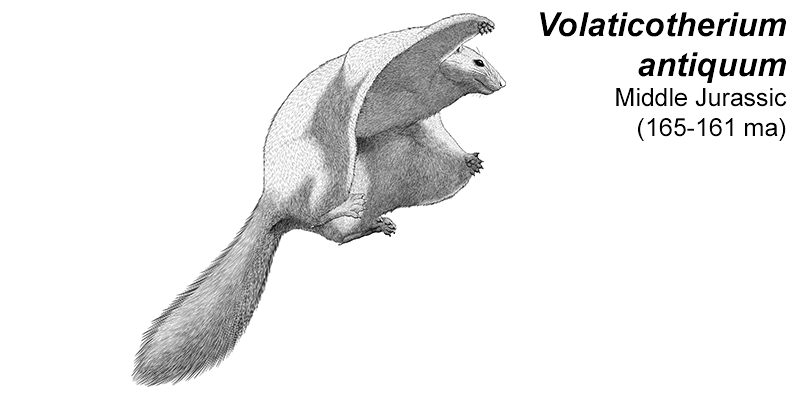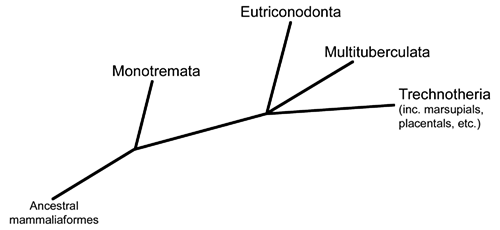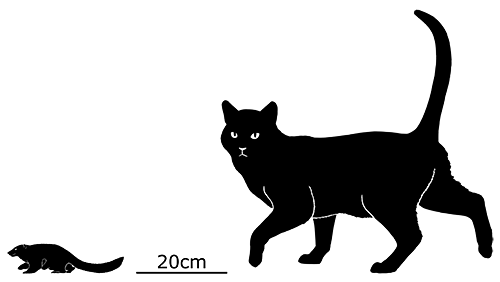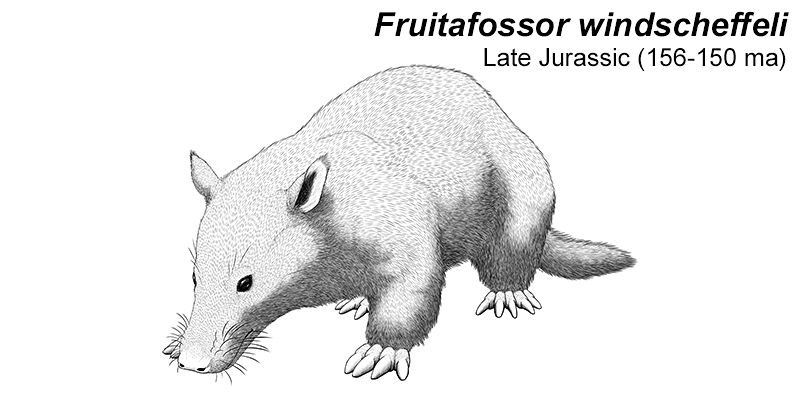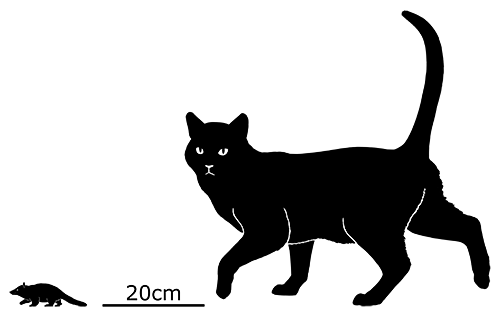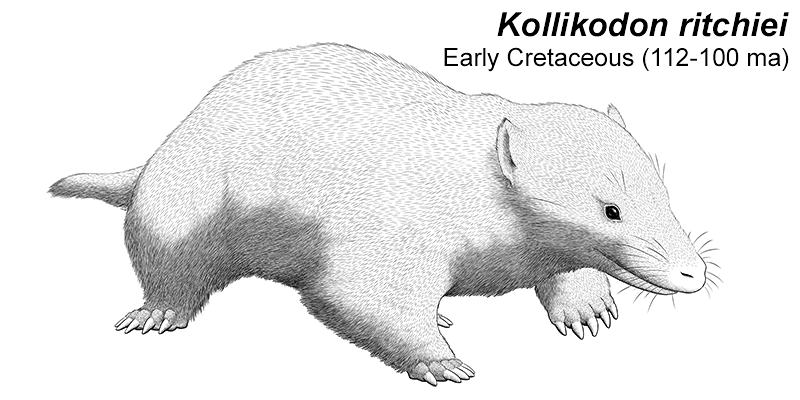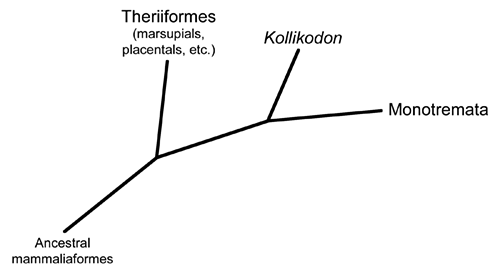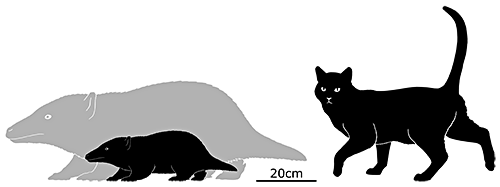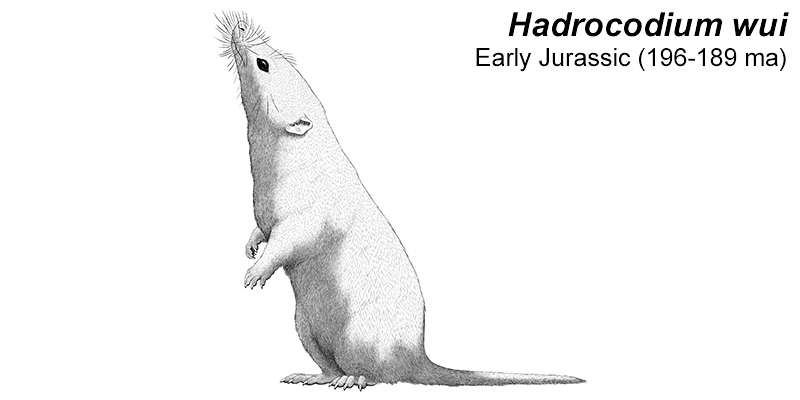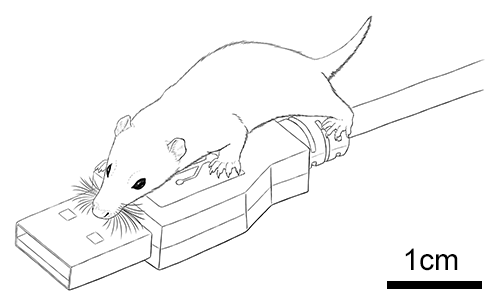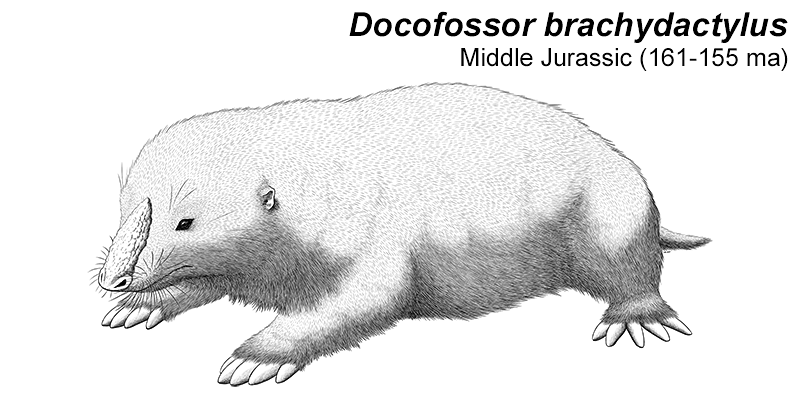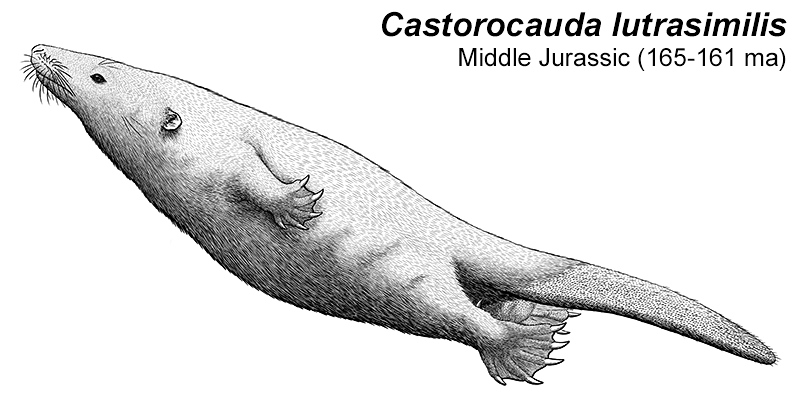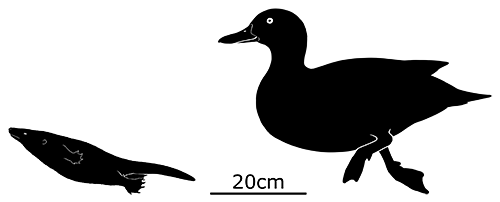Megaconus
Now we come to a group known as the haramiyidans, and things get a little… confusing.
First appearing in the Late Triassic, haramiyidans are known from Europe, Greenland, Asia, and North Africa, and lasted up until the mass extinction at the end of the Cretaceous – making them one of the longest-lived mammal lineages ever.
The problem is that we don’t know exactly what they were. For a long time they were known only from teeth and jaw fragments, and recent discoveries of more complete fossils show a mix of anatomical features that make it difficult to definitively place them in the mammal evolutionary tree. Different studies come up with different answers depending on which haramiyidans are included in their analyses.
The two main competing ideas are that they’re either close relatives of the multituberculates, or not even part of Mammalia itself at all, belonging somewhere in the mammaliaform cynodonts instead. It’s an issue that probably won’t be cleared up without more fossils and more comprehensive studies of the group as a whole.
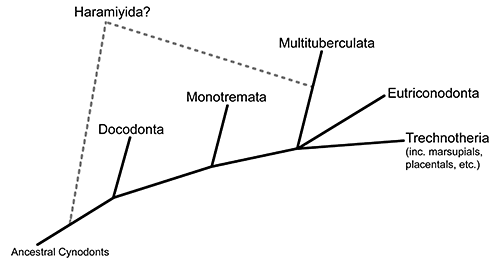
Megaconus lived during the Middle Jurassic of China (165-161 mya). About 30cm long (1′), its known from a complete skeleton with some “primitive” features in its ear bones, vertebrae, and heels, giving support to the haramiyidans-are-mammaliaformes hypothesis.
It had teeth similar to rodents, with long incisors and large molars, and was either an omnivore or a herbivore, comparable to modern ground squirrels. The structure of its limbs suggest it would have walked with a gait like armadillos or rock hyraxes.
Fur impressions on the fossil show a mix of guard hairs and underfur – but surprisingly the underside of its belly seems to have been only sparsely haired, or even naked.
